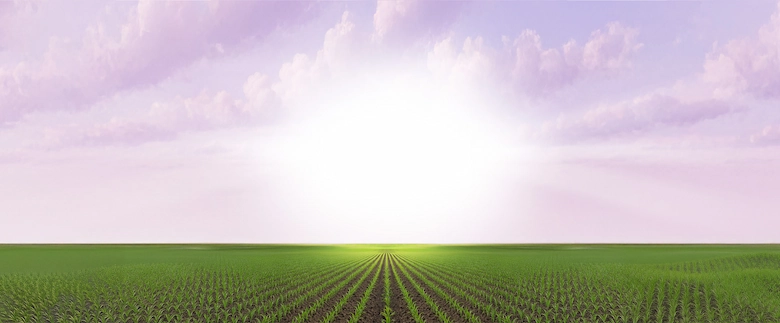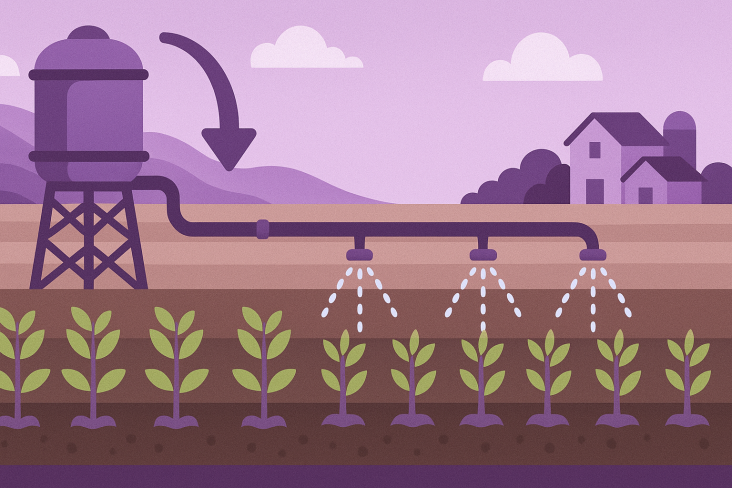
Fall 2025
How can you design a water wise irrigation system? In areas with sloped farmland, gravity plays a major role in how water moves, making the design of irrigation systems critical to both crop success and environmental stewardship.

Farmers need water to grow crops, but getting water to the right place isn’t always easy. On sloped land, gravity pulls water downhill. This means some areas can get too much water, while others don’t get enough. When that happens, plants might not grow well, and water can be wasted. In fact, farmers around the world are already working to fix this problem. According to the Food and Agriculture Organization (FAO), about 70% of all freshwater used by humans goes to agriculture. Even small improvements in how we move water on farms can make a big difference for people and the planet.
By learning how gravity affects water flow, we can design better irrigation systems that help farmers use water wisely. Whether it's building small channels, using drip lines, or changing the slope of the land, understanding gravity helps farmers get water exactly where it's needed without wasting a drop.
You can run a challenge with our week-long guide or our multi-week guide. Either one you select, you can enter to win a prize. Just remember to fill out the Student Reflection sheet when you submit! We also created this PowerPoint to help walk your class through the project.
Both challenge packets offer guiding questions, standards, a materials list, and suggested design process information. There is also a content packet that offers more background information on irrigation and gravity to get students started.
Get creative with your prototype! In the past, students have used recycled materials and digital tools like Minecraft education.
We also suggested connecting with farmers, equipment managers, or engineers in your community to learn more! You can look up your local Farm Bureau or Ag in the Classroom to see if they can connect you.
All guides are at the bottom of the page.
Good luck, design teams!
Next Generation Science Standards nextgenscience.org
COMMON CORE STANDARDS corestandards.org/mathematics-standards
• EE.B.6 Use variables to represent numbers and write expressions when solving real world or mathematical problems.
• RP.A.3 Use proportional relationships to solve multistep ratio and percent problems.
• SP.C.5 Summarize numerical data sets in relation to their context.
• SP.B.4 Display numerical data in plots on a number line, including dot plots, histograms, and box plots.
corestandards.org/English-language-arts-standards
• RST.6-8.1 Cite specific textual evidence to support analysis of science and technical texts.
• RST.6-8.3 Follow precisely a multistep procedure when carrying out experiments, taking measurements, or performing technical tasks.
• RST.6-8.7 Integrate quantitative or technical information expressed in words with a
version of that information expressed visually (e.g., in a flowchart, diagram, model,
graph, or table).
• WHST.6-8.1 Write arguments focused on discipline-specific content.
• WHST.6-8.2 Write informative/explanatory texts, including scientific procedures/ experiments or technical processes.
• SL.6-8.4 Present claims and findings, emphasizing salient points in a focused, coherent manner with relevant evidence, sound valid reasoning, and well-chosen details.